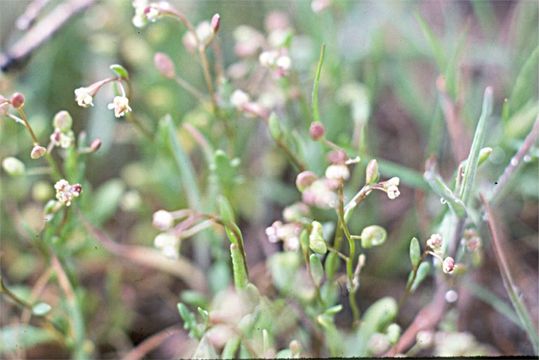Hornungia
|
Family: Brassicaceae |
Annuals [perennials]; [caudex branched]; not scapose; glabrous or puberulent, trichomes minutely branched and subsessile, mixed with simple ones. Stems erect, ascending, or decumbent [procumbent], branched or, rarely, unbranched. Leaves basal and cauline [or cauline absent]; petiolate or subsessile; basal rosulate or not, petiolate, blade margins entire, dentate, or pinnatisect; cauline petiolate or subsessile, blade margins pinnatisect, pinnatifid, dentate, or entire. Racemes (corymbose), elongated or not in fruit. Fruiting pedicels divaricate, slender. Flowers: sepals spreading or reflexed, ovate [or oblong], (glabrous or puberulent); petals white, spatulate, [obovate, oblong, or oblanceolate], (longer or shorter than sepals), claw absent, (apex obtuse or rounded); stamens (rarely 4), subtetradynamous; filaments often dilated basally; anthers ovate, (apex obtuse); nectar glands lateral, 1 on each side of lateral stamen, median glands present or absent. Fruits silicles, sessile, oblong, elliptic, obovoid [ovoid, suborbicular, lanceoloid], keeled, angustiseptate; valves each with prominent midvein, glabrous; replum rounded; septum complete; ovules [4-]10-24 per ovary; style usually obsolete (rarely to 0.5 mm); stigma capitate. Seeds biseriate or aseriate, plump, not winged, oblong; seed coat (obscurely reticulate) mucilaginous or not when wetted; cotyledons incumbent, rarely accumbent. x = 6. |

